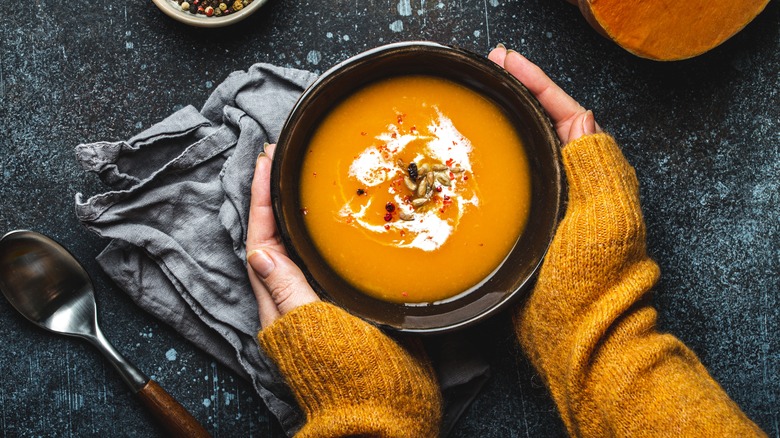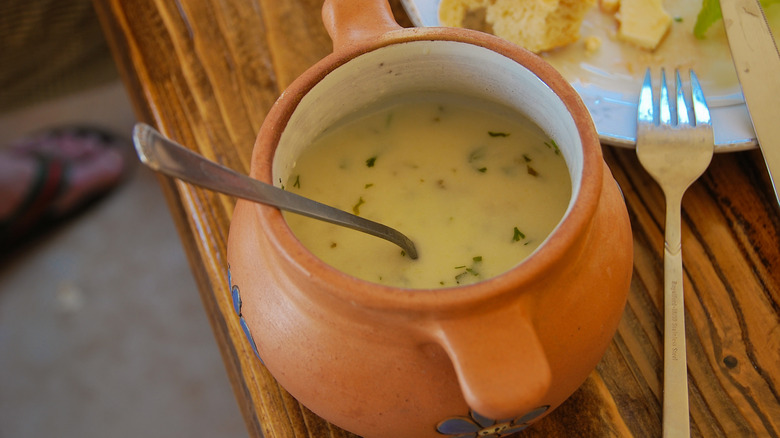The Mistake You Need To Avoid When Thickening Soup With Flour
Fall is officially here! As sad as it can be to say goodbye to the sunshine of summer, let's give a warm welcome to changing leaves, cooler temperatures, and cozy snuggles under a blanket. Along with fall comes an all-time favorite that we missed all summer long — soup, as noted by Female First. Sure, there's always gazpacho, but these two are not the same. While so versatile and extremely comforting, it can also be terrible when you get some bad soup. How hard can it be to really mess it up?
Of course, we have our thinner options like vegetable consommé or the classic chicken noodle soup, but there is something so hearty about a thick, creamy one! Essentially, this meal is thickened by adding either flour or cornstarch. While this seems pretty simple in theory, including these ingredients can sometimes create a lumpy, unappetizing dish. So, how should these thickening agents be added to the soup to ensure no lumps?
The perfect soup every time
Now that we've mentioned that soups can be thickened typically by flour and cornstarch, we must also note that you can add the agent at different times and in various ways, as Southern Living notes. For example, you can thicken your soup at the beginning by creating a roux, a mixture of flour and fat, or at the end, by mixing in a slurry. Our recommendation: thicken by use of a slurry. Making a slurry that is already in a liquid state when you add it to your soup is much less likely to clump than a roux created at the beginning. This method will also allow you to have more control over the amount of the thickening agent that is added to the meal to obtain the desired consistency.
According to Kitchn, a slurry is made by combining flour or cornstarch with water or hot cooking broth. Once you have made it, you can add it to your soup, 1 tablespoon at a time, allowing it some time to cook to thicken until you have achieved your desired consistency. Be sure not to add it all at once, as you may not need to use the entire amount. Although this tip is perfect for soups, it's also great for other liquid-based dishes like gravy. So be sure to give it a try!

